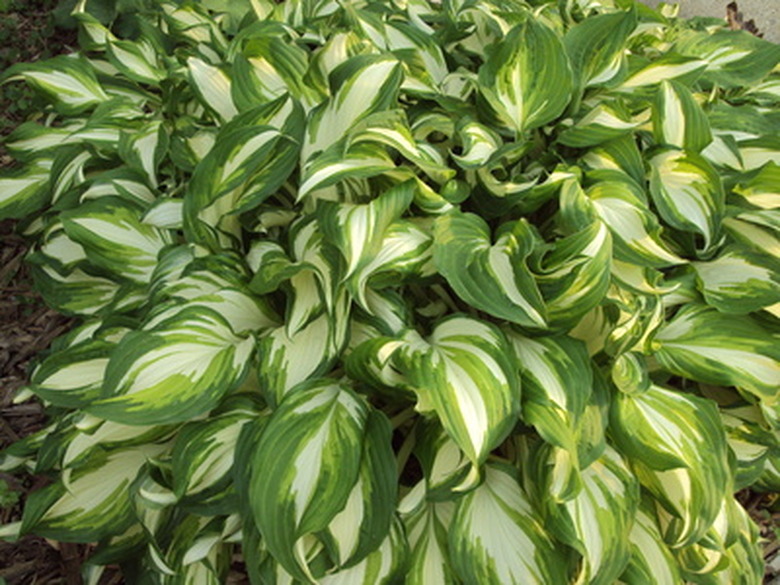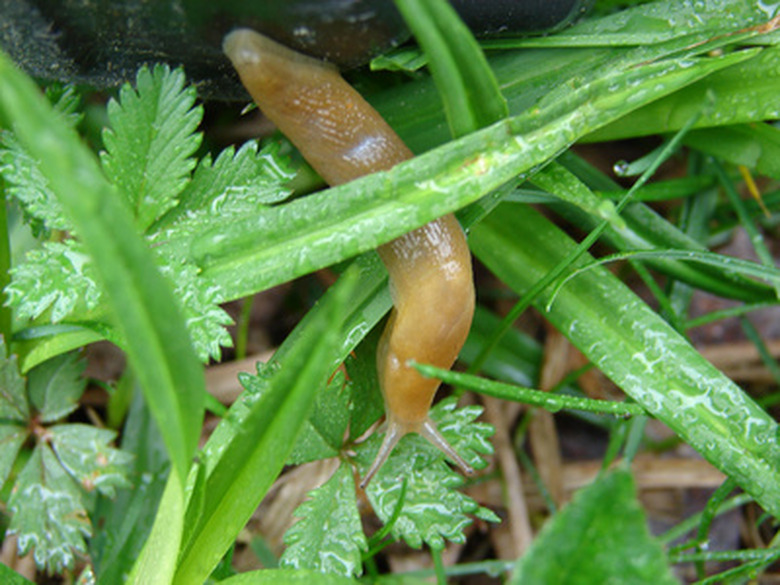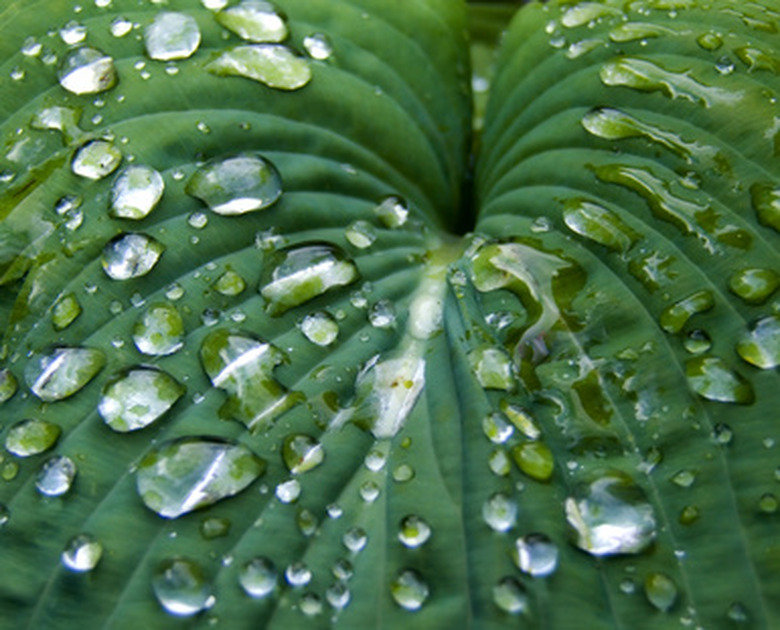What Is Making Holes On My Hosta Leaves?
In early summer, hostas unfold their remarkable leaves and provide tropical accents for the perennial garden. Holes may begin to mar hosta leaves as summer wears on. Any of several culprits — critter, microbial or environmental — may make these holes.
In early summer, hostas unfold their remarkable leaves and provide tropical accents for the perennial garden. Holes may begin to mar hosta leaves as summer wears on. Any of several culprits — critter, microbial or environmental — may make these holes. Some observations should tell gardeners which problem afflicts their hostas.
Pests
Several pests are nocturnal foragers that chew holes in leaves beginning in spring and growing throughout the summer until the leaves look like Swiss cheese. The most common of these is the slug, a shell-less crustacean that lives in cool organic debris during the day but slithers up stalks and munches on the undersides of leaves between and across leaf veins. Slug damage reaches a peak during rainy periods. Cutworms, the larval or caterpillar stage of a moth, do most of their damage in spring before they pupate. The 1.5- to 2-inch long caterpillars chew small elongated holes. They have yellowish diamonds on their backs. Earwigs are copper-colored bugs that eat irregular holes in hosta leaves. They also eat aphids, mites and other insect's eggs; they turn to hosta leaves only during very wet springs when their populations spike. Several traps and insecticides provide effective treatments.
- In early summer, hostas unfold their remarkable leaves and provide tropical accents for the perennial garden.
- The most common of these is the slug, a shell-less crustacean that lives in cool organic debris during the day but slithers up stalks and munches on the undersides of leaves between and across leaf veins.
Microbes
A few hosta infections produce holes in leaves. Nursery-grown hostas, particularly those grown in the southeastern United States, may develop foliage blight with holes in leaves. Water carries Phytophthora spp. organisms, which spread across the leaf in brownish circular lesions as the water sits on the leaves. Impatiens necrotic spot virus (INSV) and tomato ringspot virus spread on insects; they form circular lesions that may create holes before the entire leaf withers. INSV is more common in the southeastern U.S., according to the Iowa State University Extension. Sanitation is key in fighting fungus-like organisms. Give each plant enough space for good air circulation and keep the ground clean.
- A few hosta infections produce holes in leaves.
- Nursery-grown hostas, particularly those grown in the southeastern United States, may develop foliage blight with holes in leaves.
Environment
If thin leaves suddenly display holes after severe weather in summer, the culprit is most likely hail. The little pellets freeze the tissue as they fall on it, piercing the suddenly crisp area. Holes surrounded by dry brown tissue that appear over a period of cloudless heat in midsummer may result from sun scorch. Sun scorch occurs when plants get too much light for the cultivar.
Deadly Parasite
Hostas are fairly rugged; removing affected foliage solves most problems. Irregular long holes that begin with brown streaks, however, may be the result of foliar nematodes, a parasitic roundworm that can spread to surrounding plants and destroy a collection. Nematodes do the most damage during late summer and early fall. Nematodes also carry tobacco rattle virus which begins as small yellow lesions that expand into holes with thick brown rims, usually in the tender areas between leaf veins. Gardeners should remove and destroy affected plants.
- If thin leaves suddenly display holes after severe weather in summer, the culprit is most likely hail.
- Irregular long holes that begin with brown streaks, however, may be the result of foliar nematodes, a parasitic roundworm that can spread to surrounding plants and destroy a collection.


